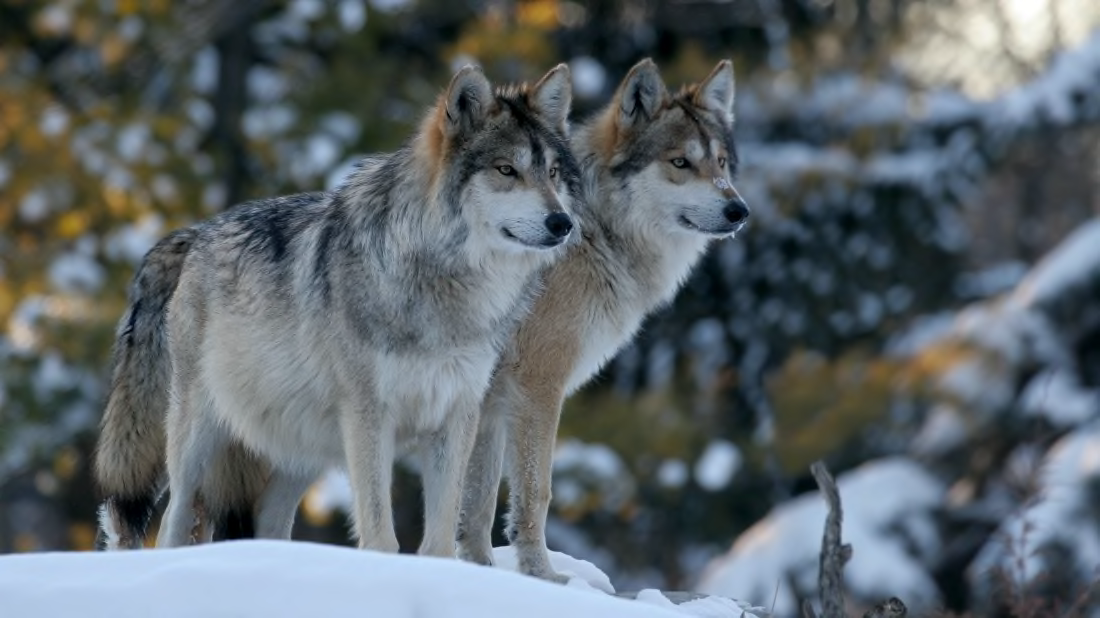An Ice Age Wolf Head Was Found Perfectly Preserved in Siberian Permafrost
ISTOCK/STEVEGEER
Don’t lose your head in Siberia, or it may be found preserved thousands of years later.
A group of mammoth tusk hunters in eastern Siberia recently found an Ice Age wolf’s head—minus its body—in the region’s permafrost. Almost perfectly preserved thanks to tens of thousands of years in ice, researchers dated the specimen to the Pleistocene Epoch—a period between 1.8 million and 11,700 years ago characterized by the Ice Age. The head measures just under 16 inches long, The Siberian Times reports, which is roughly the same size as a modern gray wolf’s.
Believed to be between 2 to 4 years old around the time of its death, the wolf was found with its fur, teeth, and soft tissue still intact. Scientists said the region’s permafrost, a layer of ground that remains permanently frozen, preserved the head like a steak in a freezer. Researchers have scanned the head with a CT scanner to reveal more of its anatomy for further study.
Tori Herridge, an evolutionary biologist at London’s Natural History Museum, witnessed the head’s discovery in August 2018. She performed carbon dating on the tissue and tweeted that it was about 32,000 years old.
The announcement of the discovery was made in early June to coincide with the opening of a new museum exhibit, "The Mammoth," at Tokyo’s Miraikan National Museum of Emerging Science and Innovation. The exhibit features more than 40 Pleistocene specimens—including a frozen horse and a mammoth's trunk—all in mint condition, thanks to the permafrost’s effects. (It's unclear if the wolf's head is included in the show.)
While it’s great to have a zoo’s worth of prehistoric beasts on display, scientists said the number of animals emerging from permafrost is increasing for all the wrong reasons. Albert Protopopov, director of the Academy of Sciences of the Republic of Sakha, told CNN that the warming climate is slowly but surely thawing the permafrost. The higher the temperature, the likelier that more prehistoric specimens will be found.
And with average temperatures rising around the world, we may find more long-extinct creatures rising from the ice.

No comments:
Post a Comment